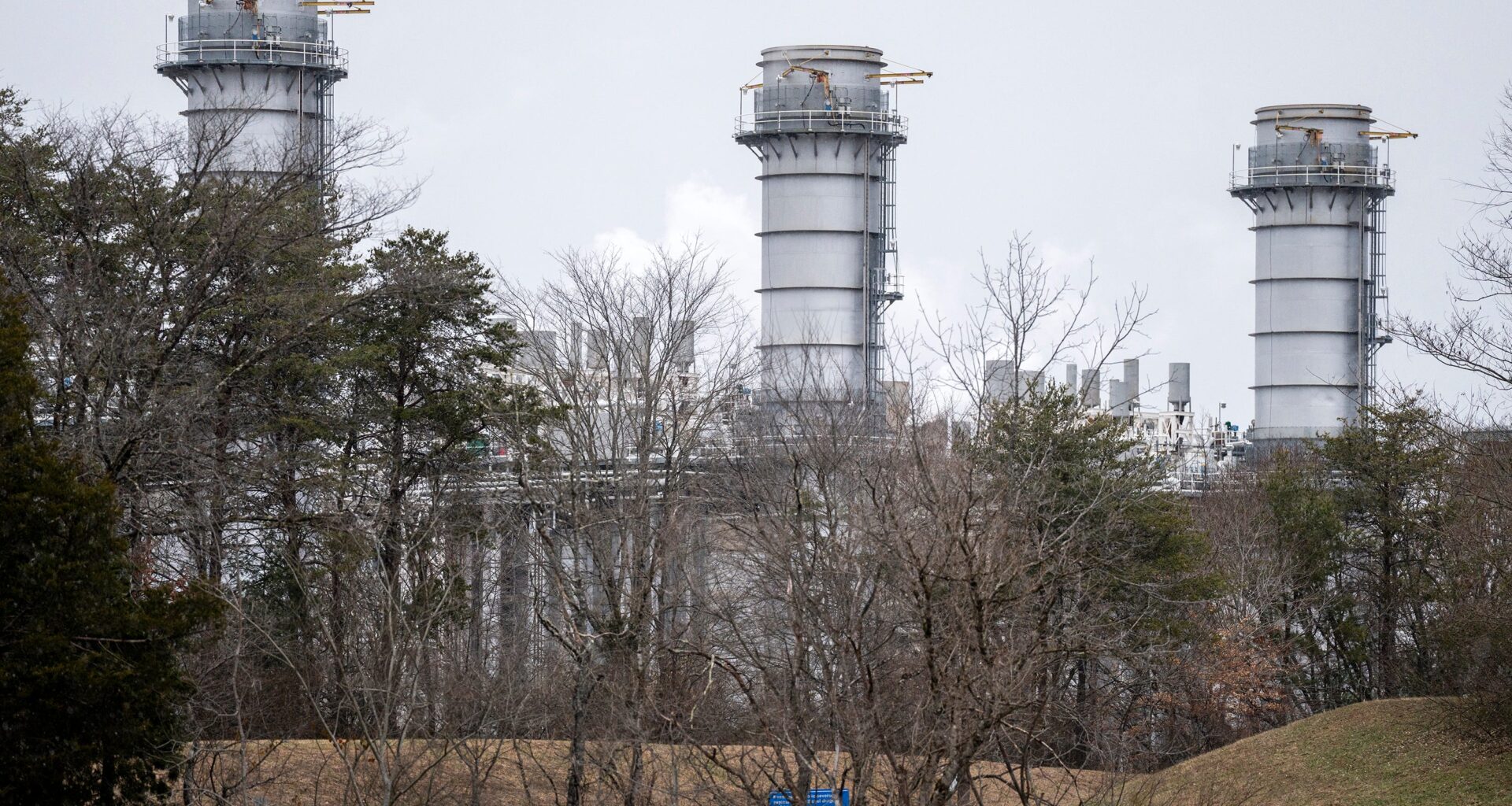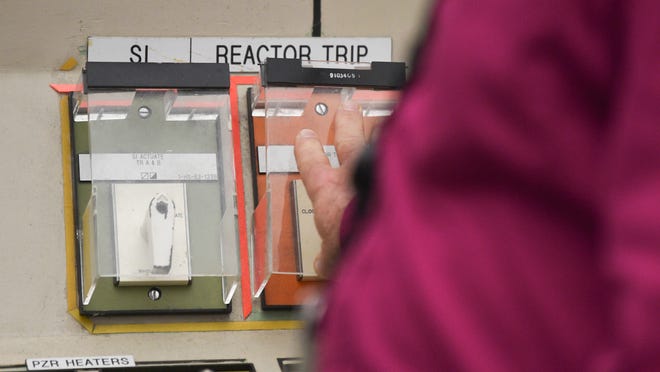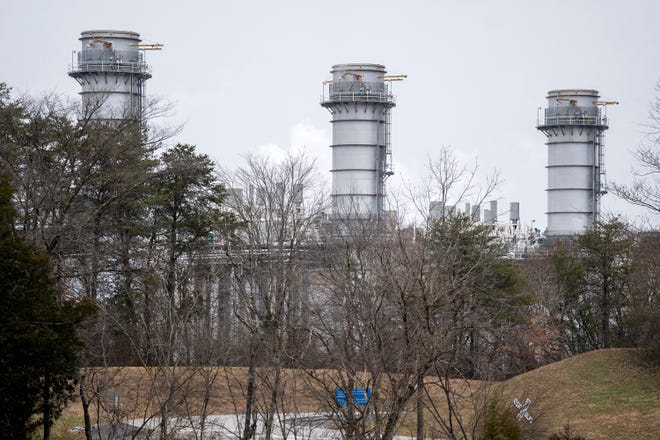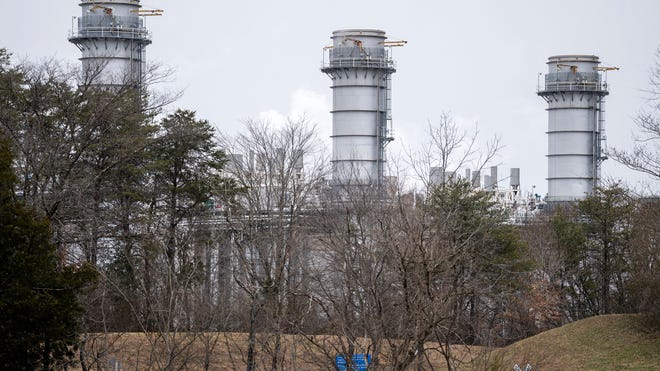
TVA is dealing with unplanned outages at all three of its nuclear plants, which are typically stable.The necessary upgrades will cost TVA millions on top of the billions it’s spending to build new natural gas plants.Climate groups warn that relying on fossil fuels could be a “risky bet” for the nation’s largest public utility.
Six of the 94 commercial nuclear reactors in the U.S. are putting no electricity on the grid as of Feb. 14, according to the U.S. Nuclear Regulatory Commission, and half of those six are owned by the Tennessee Valley Authority.
At each of the federal utility’s nuclear plants – Browns Ferry (Alabama), Sequoyah (outside Chattanooga) and Watts Bar (an hour southwest of Knoxville) – unplanned generator trips have caused reactor systems to completely power down, leaving TVA to rely largely on fossil fuels to make up the loss of electric output.
Between Oct. 1 and Dec. 31, TVA sourced 34% of its electricity from gas plants and 36% from its nuclear plants, according to a quarterly financial report. Another 16% was sourced from coal-fired plants.
The utility typically would generate around 40% of its electricity from nuclear plants, but two outages – one planned and one unplanned – decreased their output during the first quarter of its fiscal year. That was before two nuclear reactors meant to be at full power were knocked offline in January and February.
Compared to the same quarter last year, TVA spent $80 million more on purchased power, as the percent of TVA’s electricity it bought from other companies rose from 15% to 19%.
The outages come following efforts by TVA to increase the output of its aging nuclear plants to meet growing demand for electricity.
TVA juiced 24 additional megawatts from Watts Bar Unit 1 after performing 12,000 maintenance activities during a planned outage that ended Dec. 13, but the reactor tripped at 2 a.m. Jan. 17 and hasn’t come back online since.
“This was not an issue we could have found with the inspection, testing or maintenance that’s typically done on these machines,” TVA CEO Jeff Lyash said about the Watts Bar outage in an interview with Knox News. “It was an unusual equipment failure that it took us some time to understand. And so now we’re not just repairing that failure, we’re improving the design of that equipment to make sure we eliminate that underlying vulnerability.”
Browns Ferry, which celebrated its 50th anniversary last year, is the most powerful plant in the TVA system. It can now generate 3,954 megawatts between its three reactors, though its output is far lower after a reactor came offline for an unplanned outage Feb. 8.
The cascading outages are unusual for TVA in the 21st century, an era in which its nuclear plants have won accolades for steady performance. TVA shut down all of its nuclear plants in 1985 in the face of pressure over mismanagement and safety violations, and some of its reactors weren’t finished or reopened for decades.
The outages at Browns Ferry Unit 3, Sequoyah Unit 2 and Watts Bar Unit 1 are not due to failures of reactor vessels holding radioactive fuel. TVA expects the outages will not be extended, Chief Nuclear Officer Tim Rausch told the utility’s Board of Directors on Feb. 13, though crews are still inspecting and resolving issues with electrical equipment.
In the case of Sequoyah Unit 2, which has been offline since July, the utility plans to spend around $82 million to replace a generator before turning the reactor back on this spring. Two other reactors, Browns Ferry Unit 2 and Watts Bar Unit 2, are due for routine refueling outages this spring.
TVA will invest billions in nuclear, natural gas
TVA’s grid, which supplies power to 10 million people in seven states, has been stretched to deliver higher electricity demands than ever in its history. The utility is simultaneously having to replace electricity generation lost with closing coal plants.
TVA is preparing to make historically large investments to build a grid supported even more by natural gas and nuclear energy, and it has raised its electricity rates twice in two years to help cover costs. It plans to spend $16 billion over the next few years to build new gas plants and upgrade its transmission system.
That’s separate from the $6 billion it will spend through 2045 to extend the life of its nuclear plants, the oldest of which celebrated its 50th anniversary last year.
TVA values nuclear plants as a clean energy source that (normally) stays running at all hours. TVA also values natural gas plants for their ability to start generating electricity quickly at any time of the day, and the utility is midway through a program to build an additional 7,000 megawatts of natural gas plants. That’s enough to power around 4 million homes.
In the meantime, TVA is working to maximize the power it can get from its existing plants.
“We know demand is growing at the same time our assets are aging, so it’s important that we’re maintaining our assets and squeezing every megawatt that we can out of them,” Don Moul, TVA chief operating officer, told the Board of Directors on Feb. 13.
Climate groups say fossil fuel plants are risky
Environmental groups have warned for years of a TVA power system in which aging sources of carbon-free energy – nuclear reactors and hydroelectric dams – are pushed to their breaking point before the utility adds a meaningful amount of solar power, leaving it with few options but for fossil fuels to fill the gap.
Some also bemoan that TVA’s innovation investments are focused on developing small modular reactors in Oak Ridge rather than solar farms paired with grid-scale batteries, a technology TVA leaders argue is not reliable enough.
The utility’s priorities align well with those of Chris Wright, U.S. Secretary of Energy under President Donald Trump and a former gas and oil executive whose “energy dominance” agenda includes support for fossil fuels and new nuclear energy, Lyash told Knox News.
But the new administration’s sidelining of climate change as an energy consideration is short-sighted, said Stephen Smith, executive director of the Knoxville-based Southern Alliance for Clean Energy.
“The science of climate change did not change one iota on January 20, 2025, and so betting heavily on fossil fuels in a world where we have to be dealing with the implications of fossil emissions is a risky bet,” Smith told Knox News.
Part of the risk of fossil fuel plants is financial because of the expense of complying with environmental regulations. President Trump has said he wants to undo environmental regulations aimed at reducing carbon emissions, which could save TVA millions.
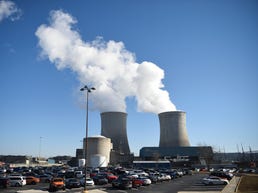
The TVA board approved $233 million for two scrubbers to remove emissions at the coal-fired Shawnee plant in Kentucky, though the utility plans to close all of its coal plants by 2035.
TVA also plans to add 10,000 megawatts of solar to its grid by 2035 through purchase power agreements, but Smith said the utility won’t see the full benefits if it doesn’t commit to pairing solar panels with batteries to store their power when the sun isn’t shining.
For the local utilities that buy power from TVA, what they need from the federal agency is far more immediate than helping mitigate climate change. They want to know whether TVA can keep their customers’ lights on and their power bills low.
“When you have the inevitable issues that come along with maintaining large machines, they’ve got the ability to back that up with other sources of energy,” said Mike Knotts, CEO of the Tennessee Electric Cooperative Association. “That’s what natural gas is good at.”
Daniel Dassow is a growth and development reporter focused on technology and energy. Phone 423-637-0878. Email daniel.dassow@knoxnews.com.
Support strong local journalism by subscribing at knoxnews.com/subscribe.
